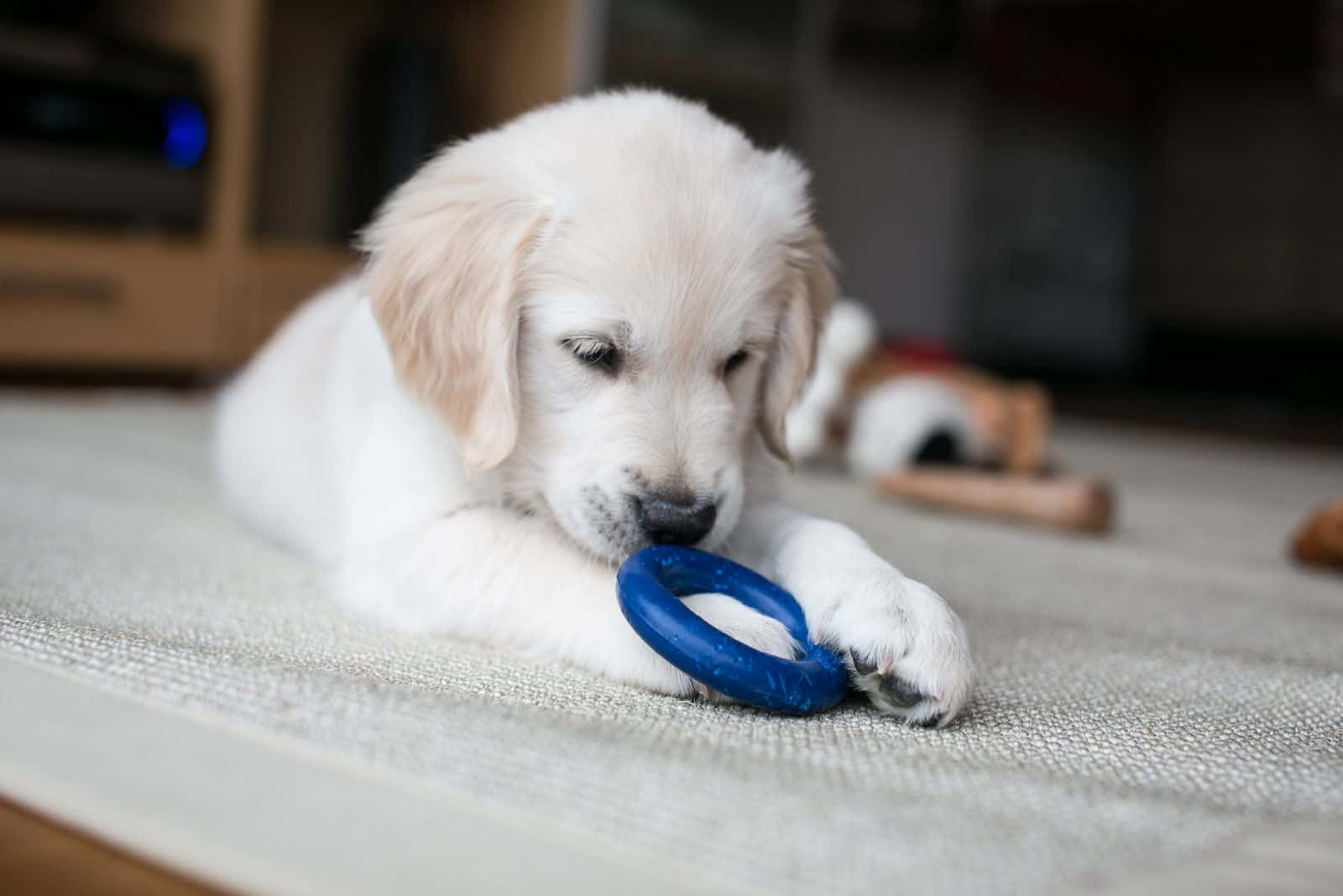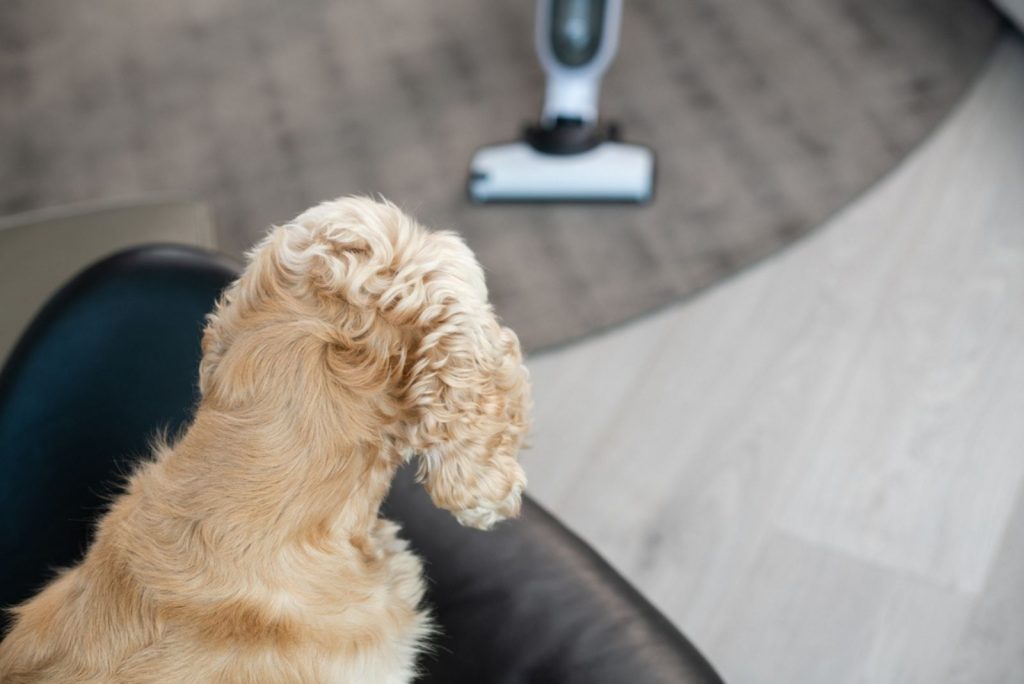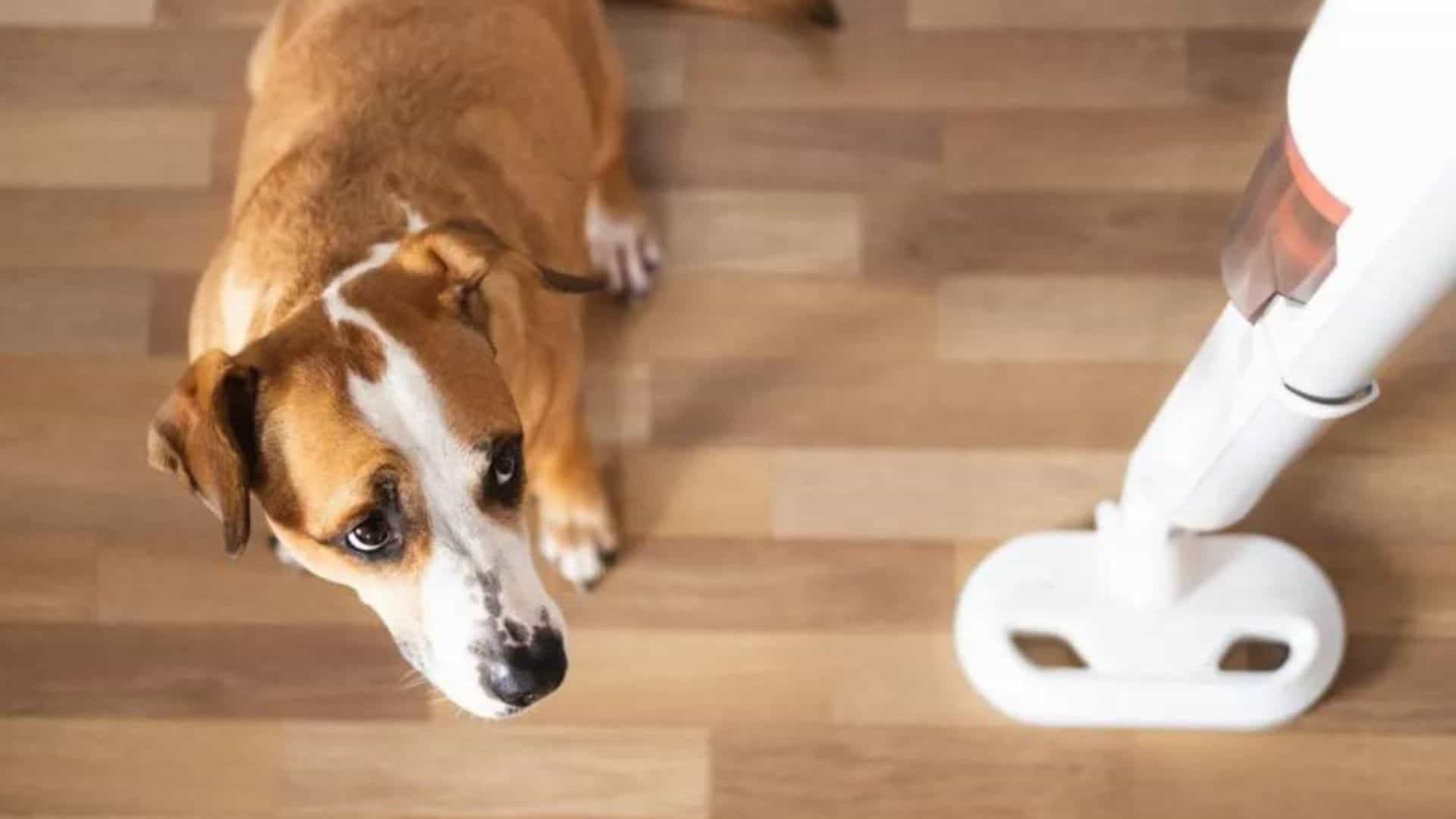Among the many canine fears, the vacuum cleaner seems like the most peculiar one. However, there’s a pretty good and valid reason behind said fear.
Namely, the noise is the biggest source of that phobia. Dogs hear a lot better than humans do and the sound that the vacuum produces is then much louder to them than to us.
One can only imagine how painful that is to them when it already sounds noisy to us.
Apart from that, it’s the added suction that the contraption does which spooks them too, and the mix of the two produces said fear, having them bark at it while backing away from it.
However, this can pose a problem when you’re trying to clean your house with an inside dog.
You don’t want to frighten your dog for no reason, but you do need to clean the house every now and then, so what can be done about it?
Quite a few things, actually, each of them quite simple, but the sooner you start it, the easier it’ll be for your dog to adjust.
1. Get Him Out Of The Room When You’re Vacuuming

The simplest thing that you can do is to vacuum one room at a time and make sure that the dog isn’t present in said room.
Not seeing the vacuum at work and having the noise muffled behind a closed door will make it a lot less likely for him to get scared.
This is especially true if you bring some of his favorite toys over to distract him from the alien noise he’ll be hearing from the other room.
2. Desensitize Him To The Sounds Of The Vacuum At An Early Age
While the early age isn’t mandatory and can be done at any life stage, it certainly does make the process easier and quicker.
This is a multi-step process still and should be done slowly.
Skipping ahead too quickly will only make you start all over again if your dog suddenly seems uncomfortable around the vacuum again.
Use The Vacuum At Its Lowest Setting Around Your Pooch
The first step is to start him off with the mildest of settings that your vacuum will allow and not moving the contraption around too much.
This will help your dog get familiar with the noise it makes at a more acceptable volume that won’t scare the fur off him.
It’s also good to use it as far away from the dog as possible to make said noise as quiet as it could be.
Gradually, you’ll be moving it closer to him, but only to the distance where he seems comfortable with it.
Give Him Treats If He’s Progressing
If it seems like he’s receptive to the training, make sure to provide him with some treats, ones that he likes the most.
After all, this is a relatively big fear you’re trying to make him get over, so it only stands to reason that the best treats will have the best effect.
Gradually Increase The Power Of The Vacuum In Defined Increments

As you repeat the process, you’ll see your dog get more comfortable with the vacuum at the presented volume and working capacity.
Once he seems indifferent to the sound of it, gradually increase the power, then get him used to that level, repeating until he’s fine with it functioning at full capacity.
When that step is finished, your dog should be completely fine with you vacuuming around him, so long as you don’t make any unnecessarily sudden movements with it, which is a given.
Repeat This Process With Every New Vacuum
In case the old one breaks down and you need to get a new one that’s a different model, you may see your dog be anxious and frightened around it again.
This is all part of the standard process as the new model likely has a different shape and sound to it.
Some may even have an entirely different scent to them which can be equally off-putting for your furry friend.
If your dog ends up being frightened of your new vacuum, then you’ll have to do the process all over again.
While it’s not tedious, it is mandatory if you want to use it in his presence.
What Are Some Of The Most Common Signs That My Dog Is Afraid Of The Vacuum Cleaner?
While fear is usually a pretty expressive emotion, there are a number of hints that allude to a fearful expression, some more obvious, some less so.
Here are some of the more common ones in dogs:
- Stiff expression, both in body and face
- Ears raised up on alert
- Tail between his legs
- Lowering himself down as if ready to pounce
- Shaking
- Licking his lips
- Raising his paw toward the source of the fear
- A focused expression with a furrowed brow
- Alternatively, he’s averting his gaze from the source of the fear
- Mouth is shut tight
- He’s barking directly at the vacuum in a tone that would suggest a whine
- He’s actively trying to move away from it
- He ends up going #1 or #2 due to prolonged exposure to the source of the fear
- He simply freezes in place
- He starts pacing about anxiously or doing other similar activities.
Should you spot these signs in any combination while the vacuum is turned on, know that the cause of it is more than likely it and that you should stop it before more problems occur.
In Conclusion
Dogs, while mostly brave, are still afraid of certain things. One such constant is the vacuum cleaner.
Sure, some dogs are less averse to it than others, but the fact of the matter is that it’s a persistent fear across all dog breeds.
It may initially pose a challenge to you, but it’s relatively easy to overcome, just make sure to slowly work with your doggo to overcome it.
The sooner you start, the easier it’ll be for him to understand and overcome the problem at hand, though this can be done at any age.
I hope that these tips help you and your pooch get over this particular issue.
Until next time, pet parents.
READ NEXT: 3 Shocking Reasons Why Dogs Are Scared Of Thunder
